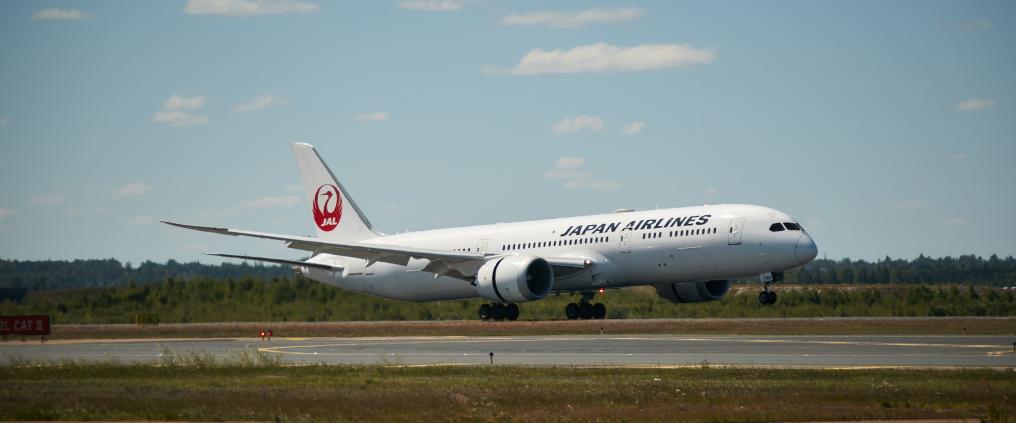In July, Japan’s flag carrier Japan Airlines, celebrated five years of daily direct flights between Helsinki Airport and Tokyo Narita International Airport. A member of the Oneworld alliance, the airline also offers codeshare flights with Finnair to other airports in Japan.
1. Established in 1951, Japan Airlines began intercontinental flights as early as 1954, when the company opened a route between Tokyo and San Francisco. After operating successfully for decades, the carrier filed for bankruptcy in 2009. With sizeable budget cuts and financial aid from the Japanese government, the company was able to rise from the ashes.
2. The company’s logo, which dates back to 1959, features a dancing red-crowned crane, or Manchurian crane, which has traditionally been considered sacred in Japan. This endangered bird lives, for example, on the island of Hokkaido, which is one of the northernmost islands of Japan. The logo, which also goes by the name Tsurumaru, symbolises how Japan Airlines has “opened up the Japanese skies”, accelerating the internationalisation of the country and bravely facing new challenges.
3. Porco Rosso, an animated film by the renowned animator and director Hayao Miyazaki, premiered in July 1992 on a Japan Airlines flight. Produced with support from Japan Airlines, the film tells the story of a bounty-hunter pilot who has been turned into a pig, a plane mechanic girl, and their adventures by the Adriatic Sea.
4. According to the company’s history, in the early 1990s, Japan Airlines and a Japanese metal company developed the first water container suitable for the air transport of live fish. Today, the Asian markets are hungry for fresh seafood: for example, Finnair now transports, on average, 50,000 kilos of fish per day, and most of it goes to Asia.
5. Over the course of its nearly seven-decade-long history, Japan Airlines has also faced tragedy. In 1985, a fatal plane crash took the lives of 520 passengers and crew members. A Boeing 747 on its way from Tokyo to Osaka malfunctioned and the pilot lost control of the aircraft. The plane eventually crashed on a ridge of Mount Osutaka. Some of the passengers survived the crash, but as the rescue operation was delayed, many of them died from their injuries. Four people survived. Because of the crash, passengers started to avoid Japan Airlines, and the long-running growth of passenger numbers ceased. Now, the company emphasises safety in all aspects of its operations.
6. Japan Airlines is part of the JAL Group, which also includes five regional airlines who play an important role in connecting the Japanese islands and supporting the vitality of more remote regions. The group also helps areas affected by natural disasters, like earthquakes and tsunamis, by transporting supplies. Between autumn 2018 and spring 2019, the company offers discount prices for flights to Hokkaido, which has suffered from a recent earthquake.
7. Japan Airlines is striving towards becoming more environmentally friendly. The company, for example, has reduced fuel consumption and carbon dioxide emissions in many ways. The carrier also plays a role in atmospheric observation and in a project developing a waste-based aviation jet fuel. Moreover, the JAL Group’s pilots report their observations of wildfires to a research group whose aim is to increase the accuracy of satellites detecting fires.
Sources: Aeroflot, Japan Airlines, Rotten Tomatoes, Helsingin Sanomat, New York Times



